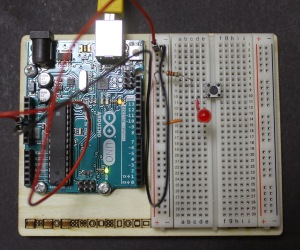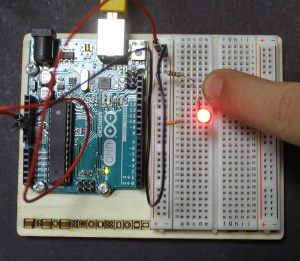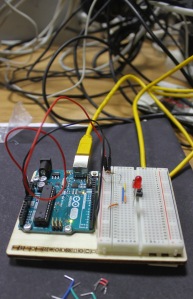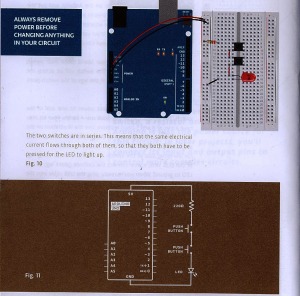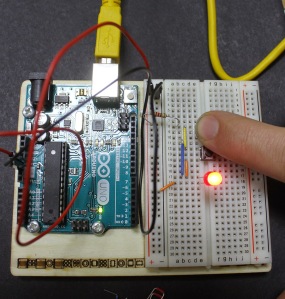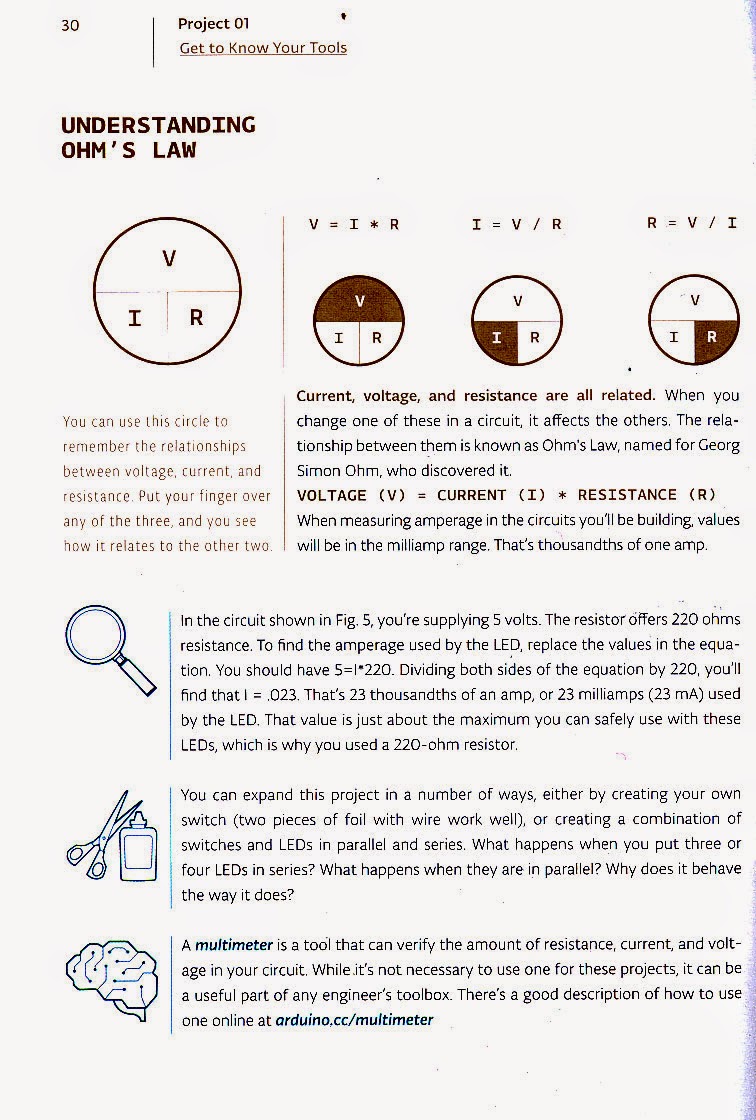THE ARCHITECTURE OF CYBERCEPTION
by Roy Ascott
Cyberception
Not only are we changing radically, body and mind, but we are
becoming actively involved in our own transformation.
And it's not just a matter of the prosthetics of implant organs,
add-on limbs or surgical face fixing, however necessary and
beneficial such technology of the body may be. It's a matter
of consciousness. We are acquiring new faculties and new understanding of
human presence. To inhabit both the real and virtual worlds at one and the
same time, and to be both here and potentially everywhere else at the same
time is giving us a new sense of self, new ways of thinking and perceiving
which extend what we have believed to be our natural, genetic capabilities. In
fact the old debate about artificial and natural is no longer relevant. We are
only interested in what can be made of ourselves, not what made us. As for the
sanctity of the individual, well we are now each of us made up of many
individuals, a set of selves . Actually the sense of the individual is giving
way to the sense of the interface. Our consciousness allows us the fuzzy edge
on identity, hovering between inside and outside every kind of definition of
what it is to be a human being that we might come up with. We are all
interface. We are computer-mediated and computer-enhanced. These new ways of
conceptualising and perceiving reality involve more than simply some sort of
quantitative change in how we see, think and act in the world. They constitute
a qualitative change in our being, a whole new faculty, the
post-biologicalfaculty of "cyberception" .
Cyberception involves a convergence of conceptual and perceptual processes in
which the connectivity of telematic networks plays a formative role.
Perception is the awareness of the elements of environment through physical
sensation. The cybernet, the sum of all the interactive computer-mediated
systems and telematic networks in the world, is part of our sensory apparatus.
It redefines our individual body just as it connects all our bodies into a
planetary whole. Perception is physical sensation interpreted in the light of
experience. Experience is now telematically shared: computerised
telecommunications technology enables us to shift in and out of each others
consciousness and telepresence within the global media flow. By conception we
mean the process of originating, forming or understanding ideas. Ideas come
from the interactions and negotiations of minds. Once locked socially and
philosophically into the solitary body, minds now float free in telematic
space. We are looking at the augmentation of our capacity to think and
conceptualise, and the extension and refinement of our senses: to
conceptualise more richly and to perceive more fully both inside and beyond
our former limitations of seeing, thinking and constructing. The cybernet is
the sum of all those artificial systems of probing, communicating,
remembering and constructing which data processing, satellite links, remote
sensing and telerobotics variously serve in the enhancement of our being.
Cyberception heightens transpersonal experience and is the defining behavior
of a transpersonal art. Cyberception involves transpersonal technology, the
technology of communicating, sharing, collaborating, the technology which
enables us to transform our selves, transfer our thoughts and transcend the
limitations of our bodies. Transpersonal experience gives us insight into the
interconnectedness of all things, the permeability and instability of
boundaries, the lack of distinction between part and whole, foreground and
background, context and content. Transpersonal technology is the technology of
networks, hypermedia, cyberspace.
Cyberception gives us access to the holomatic media of the cybernet. The
holomatic principle is that each individual interface to the net is an
aspect of a telematic unity: to be in or at any one interface is to be in the
virtual presence of all the other interfaces throughout the network. This is
so because all the data flowing through any access node of a network are
equally and at the same time held in the memory of that network: they can be
accessed at any other interface through cable or satellite links, from any
part of the planet at any time of day or night.
It is cyberception which enables us to perceive the apparitions of cyberspace,
the coming-into-being of their virtual presence. It is through cyberception
that we can apprehend the processes of emergence in nature, the media-flow,
the invisible forces and fields of our many realities. We cyberceive
transformative relationships and connectivity as immaterial process, just as
palpably and immediately as we commonly perceive material objects in material
locations. If, as many would hold, the project of art in the 20th century has
been to make the invisible visible, it is our growing faculty of cyberception
which is providing us with x-ray vision and the optics of outer space. And
when, for example, the space probe "Cassini" reaches the dense nitrogen
atmosphere of Saturn's satellite Titan, it will be our eyes and minds which
are there, our cyberception which will be testing and measuring its unknown
surface.
The effect of cyberception on art practice is to throw off the hermeneutic
harness, the overarching concern with representation and self expression, and
to celebrate a creativity of distributed consciousness (mind-at-large), global
connectivity and radical constructivism. Art now is less concerned with
appearance and surface, and more concerned with apparition, with the
coming-into-being of identity and meaning. Art embraces systems of
transformation, and seeks to maximise interaction with its environment. So too
with the human body. We are making the body a site of transformation - to
transgress the genetic limitations. And we seek to maximise interaction with
our environment, both the visible and the invisible, by maximising the
environment's capacity for intelligent, anticipatory behaviour. The artist
inhabits cyberspace while others simply see it as a tool.
The cybernet is the agent of construction, embracing a multiplicity of
electronic pathways to robotic systems, intelligent environments, artificial
organisms. And in so far as we create and inhabit parallel worlds, and open up
divergent event trajectories, cyberception may enable us to become
simultaneously conscious of them all, or at least to zap at will across
multiple universes. The transpersonal technologies of telepresence, global
networking, and cyberspace may be stimulating and re-activating parts of the
apparatus of a consciousness long forgotten and made obsolete by a mechanistic
world view of cogs and wheels. Cyberception may mean an awakening of our
latent psychic powers, our capacity to be out of body, or in mind to mind
symbiosis with others.
>So what differentiates cyberception from perception and conception? It's not
>just the extension of intelligence promised by CalTech's silicon neurons, the
>implications of the molecular computer, or the consequences of Bell AT & T's
> electro-optic integrated circuit that will compute in one billionth of a
>second. The answer lies in our new understanding of pattern, of seeing the
>whole, of flowing with the rhythms of process and system. Hitherto, we thought
>and saw things in a linear manner, one thing after another, one thing hidden
>behind another, leading to this or that finality, and along the way dividing
>the world up into categories and classes of things: objects with impermeable
>boundaries, surfaces with impenetrable interiors, superficial simplicities of
>vision which ignored the infinite complexities. But cyberception means
>getting a sense of a whole, acquiring a bird's eye view of events, the
>astronaut's view of the earth, the cybernaut's view of systems. It's a matter
>of highspeed feedback, access to massive databases, interaction with a
>multiplicity of minds, seeing with a thousand eyes, hearing the earth's most
>silent whispers, reaching into the enormity of space, even to the edge of
>time. Cyberception is the antithesis of tunnel vision or linear thought. It is
>an all-at-once perception of a multiplicity of view points, an extension in
>all dimensions of associative thought, a recognition of the transience of all
>hypotheses, the relativity of all knowledge, the impermanence of all
>perception. It is cyberception that allows us to interact fully with the flux
>and fuzz of life, to read the Book of Changes, to follow the Tao. In this,
>cyberception is not so much a new faculty as a revived faculty. It is us
>finding ourselves again, after the human waste and loss of the age of
>reason, the age of certainty, determinism and absolute values. The age of
>appearance, the Romanticism of the private, solitary individual - essentially
>anxious, alienated, paranoid. Indeed paranoia, secrecy and dissimulation
>seems to have been embedded in all aspects of the industrial age. In our
>telematic culture, instead of paranoia we celebrate Telenoia: open-ended,
>inclusive, collaborative, transpersonal networking of minds and imaginations.
>
>Cyberception defines an important aspect of the new human being whose
>emergence is further accelerated by our advances in genetic engineering and
>post-biological modelling. The originating of a life, biological conception,
>should now also be called post-biological cyberception since the decision to
>initiate and process the birth of children is shifting from the so-called
>imperatives and constraints of "nature" to the will and desire of individuals,
>in consort with new technologies and regardless of their age or sexual
>performance. And just as the cybernet is our community, we shall see
>increasingly, the replacement of the nuclear family with the non-linear
>family. The telematic culture may bring back to human relationships what
>industrial society effectively eradicated. Take life on the street now. I mean
>those streets just off the super highway. Nothing is more human, warm and
>convivial than a bunch of kids hanging out on the Internet. As networked
>virtual reality transports our telepresence, and gives us the tools to
>reconfigure our own identities, social life is becoming not only more complex
>but more imaginative. As I have long-time insisted, there is love in the
>telematic embrace.
>
>Our new body and new consciousness will bring forth a wholly new environment,
>an intelligent environment which returns our gaze, which looks, listens and
>reacts to us, as much as we do to it.: smart buildings and tools which
>listen for our every move, attend our every utterance. We are not talking
>about simple voice commands at some crude computer interface, we are talking
>about anticipation on the part of our constructed environment, based on our
>behaviour, resulting in subtle transformations of the mis en scene. Just as we
>cyborgs see, hear, feel in ways unknown directly to biological man, (although
>his myths and rituals always expressed his desires for self transformation),
>we live in an environment which increasingly hears, sees and feels us. There
>is a community implication in all of this for us. Cyberception impels us to a
>redefinition how we live together and where we live together. In this process
>we must start to re-evaluate that material matrix and cultural instrument of
>society which we have for so long taken for granted: the city.
>
>Architecture
The problem with Western architecture is that it is too much concerned with surfaces and structures and too little concerned with living systems. There is no biology of building, simply the physics of space. What we might call the
"edificial" look is all. The city is seen as a battle zone in which this or that architectural genre or idiomatic impulse fights to survive. It's a matter of relative inertia. The classicists wishing to protect the total inertia, political and cultural, of a stylistic past, the modernists protecting the privileged inertia of a stylised present. No one is interested in radical change, or intimations of the future. Edificial images, superficial surfaces
define the contemporary city. But to its everyday users, a city is not just a pretty facade. It 's a zone of negotiation made up of a multitude of networks and systems. What is needed is designers of such spaces who can provide forms of access which are not only direct and transparent but which enrich the city's everyday business and everyday transactions. The language of access to these processes of communication, production and transformation is more concerned with systems interfaces and network nodes than with traditional architectural discourse. And, without the fundamental understanding, on the part of planners and designers, of the human faculty of cyberception and its implications for transactional behavior, the cities will remain the arid and unwelcoming tracts of modernist glass and concrete or tacky post modernist folly that we are generally forced to endure. We need to reconceptualise the urban strategy, rethink architecture, we need bring into
being the idea of zones of transformation, to accommodate the transpersonal technologies that are shaping our global culture.
Cities support and embody the interactions of people, the arts add value to such exchange. Today it is predominantly electronic systems which facilitate our interaction and connectivity, and the art of today is based on such
systems. Cities can be dynamic, evolving zones of transformation, just as interactive art itself is about transformation and change. And just as cities
can offer rewarding complexities of buildings and streets to navigate, leading to surprises, delights, mysteries, beauty, and are, at their best, about human dreams and human fulfilment, so interactive art urges you to navigate its many layered multi-media realities. It invites you to immerse
yourself in its cyberspace, to get online to its global networks. If it is through recent innovations in art and science that we have become aware of cyberception, it will be cyberception at the level of city planning and architecture that will lead us to the city of the 21st century. As has already been argued in this journal, art is no longer about appearance, and certainly
not about representation, but is concerned with apparition, the coming -into- being of what has never before been seen or heard or experienced.
Cities which are no more than a set of representations function badly. Their buildings may speak "hospital", "school", "library", but unless they articulate these meanings within integrated, cybernetic systems, they lie in their teeth. And too many buildings lie in their teeth. Their monuments,unless they invite the recreation of the past by means of interactive media, are no more than inert witnesses to the duplicity of official history.
Cities work best when they are constructed to empower their citizens to find fulfilment . Such urban aspirations call for the support of an art which is less concerned with representation and expression and more concerned with
radical construction and imaginative realisation. This is the art which is presently emerging out of the fusion of new communications and computer media. It builds on the complexity and diversity of dreams and desires that our
multi-cultural, multimedia world brings forth. Just as we call this art interactive , the enriching environment which our cities must become should be based on the same principles of interaction and connectivity.
The city in the 21st century must be anticipatory, futures oriented, working at the forward edge of contemporary culture, as an agent of cultural prosperity, as a cause of profitable innovation rather than simply as an
effect. of the art and products of a former time. It should be a testbed for all that is new, not just in the arts but in entertainment, leisure, education, business, research and production.
A city should offer its public the opportunity to share, to collaborate, and participate in the processes of cultural evolution . Its many communities must have a stake in its future. For this reason, it must be transparent in
its structures, its goals, and its systems of operation at all levels. Its infrastructure, like its architecture, must be both "intelligent" and publicly intelligible, comprising systems which react to us, as much as we interact with them. The principle of rapid and effective feedback at all
levels should be at the very heart of the city's development. This means highspeed data channels crisscrossing every nook and cranny of its urban complexities. Feedback should not only work but be seen to work. This is to talk about cyberception as fundamental to the quality of living in an
advanced technological, post-biological society.
Just as architects must forget their concrete boxes and Disneyland decorations, and attend to the design of everything which is invisible and immaterial in a city, so they must understand that planning must be developed
in an evolutive space-time matrix which is not simply three dimensional or confined to a continuous mapping of buildings, roads, and monuments.
Instead planning and designing must apply connectivity and interaction to four quite different zones: underground, street level, sky/sea, and cyberspace.
Instead of the planner's talk of streets, alleyways, avenues and boulevards, we need to think of wormholes, to borrow a term from quantum physics, tunnelling between separate realities, real and virtual, at many levels, through many layers. Similarly the paradigms and discoveries of Artificial
Life science must be brought into play. The architect's new task is to fuse together material structures and cyberspace organisms into a new continuum.
Architecture is the true test of our capacity to integrate into humanly enriching zones and structures, the potentials of the material world, the new consciousness, and virtual realities. In this enterprise many traditional ideas must be jettisoned, ideas whose inherent instability was always implicit
in the dichotomies by which they were expressed: urban/rural, city/country, artificial/natural, day/night, work/play, local/global. The boundaries on these ideas have shifted or eroded altogether.
The city as an amalgam of systems interfaces and communications nodes is likely to be much more supportive of creative lives and personal fulfilments than the grossly conceived and rigidly realised conurbations of the industrial age. In place of their dense and intractable materiality, we can expect the environmental fluidity of faster- than- light pathways, intelligent surfaces and structures, and transformable habitations. The end of representation is nigh! Semiology is ceasing to underpin our structures.
Buildings will behave in ways consistent with their announced function, rather than speaking their role by semiological implication. Appearance is giving way to apparition in art, and notions of unfolding, transformation and coming-into-being are suffusing our culture. It will only be with the understanding that buildings must be planted and ‘grown’ that architecture will flourish. It's a grow bag culture that is needed, in which seeding replaces designing. Architectural practice should find its guiding metaphors in horticulture rather than in warfare. Ultimately we can perhaps talk about
pollination and grafting.
Building, like cities, should grow. But without cyberception, the traditional architect and urbanist have no idea whatsoever of what we are proposing. To see that technology changes, that building methods, economies, and planning systems change, but to fail to recognise that human beings also are radically changing, is a grave error. Perhaps classes in consciousness and gardening should replace the study of classical orders and historical cannons of styleand genre which stultify architectural education!
Where is there a building, much less a city, which supports a cyber culture, that sees cybercasting as central to human sense and sensibility? Where is there an urban space in which we can fully celebrate "Telenoia" ? Where is there an architectural school which is, as a whole, united body, determined to create the conditions for the proper evolution of a truly 21st century city?
Where in architecture and planning are connectivity and interaction taken as primary principles of the design process? The debate in architecture should not be a matter of either/or. Either classical or modern, either new or old,
either idealistic or pragmatic, either functional or frivolous. Between idealism and pragmatism, between conception of the desired and perception of the possible, lie the evolutive initiatives of cyberception .
As a frustrated HyperCard programme might say, "Where is Home?" Where will we cybernauts of the turning millennium live? What is the nature of community and cohabitation in a telematic culture. How is cyberspacial transience to be accommodated? Where are those zones that we can cyberceive as beautiful and fulfilling? We inhabit material forms with psychic dimensions set in the
limitless boundaries of cyberspace. We are networked to the universe, our nervous systems are suffusing the cosmos. We navigate inner and outerspace. We don't need buildings so much as we need ourselves to be built, or rebuilt from the genetic foundations which we are rapidly re-evaluating and may soon restructure.
Perhaps the most radical challenge to the old ideas of architecture comes from the consequences of telepresence, the disseminated self. When human identity itself is undergoing transformation, the collaborative mind and the connected consciousness replacing the unitary mind and solitary consciousness of the old order of Western thought, architecture must look to new strategies if it is to bring useful ideas about living and interacting in the world.
Telepresence is the province of the distributed self, of remote meetings in cyberspace, of online living. Telepresence means instant global interaction with a thousand communities, being in any one of them, or all of them, virtually at the same time. Telepresence defines the new human identity perhaps more than any other aspect of the repertoire of cyberculture.
Contemporary architecture and shopping have become more or less the same thing. Architecture, having turned its back on the need for radical responses to the realities of the teleself and distributed presence, constitutes little more than a shopping cart world of boxed packages, wheeled around the sterile zones of a mall culture. Each building is a prettified and packaged product, each component mail-ordered from a catalogue. The "have a good day" code of building practice has put the appeasement of tradition before collaboration
with the future. But the need for an architecture of interfaces and nodes will not go away. We shall increasingly live in two worlds, the real and the virtual, and in many realities, both cultural and spiritual, regardless of the indifference of urban designers. These many worlds interconnect at many
points. We are constantly on the move between them. In the creative zone, transience and transformation identify our way. Hi-tech chic and Bauhaus bluff will not fool our keen cyberception. Change must be radical. The new city,
both in its visible immateriality and its invisible construction, will grow into a fruitful reality only if it is seeded with imagination and vision. It is artists who can become the sowers of these seeds, who can take the chances
needed to allow new forms and features of the new city to grow. It is their cyberception that equips them with the global awareness and conceptual dexterity to resee, rethink, and rebuild our world.
(C) Roy Ascott 1994
http://www.eff.org//Net_culture/Cyborg_anthropology
/cyberception.paperPresented at:
>
>ISEA'94, , The 5th International Symposium on Electronic Art , Helsinki,
>Finland
>
>F.A.U.S.T. '94,Forum des Arts de l'Univers Scientifique et Technique
>,Toulouse, France.
>
>Cybersphere '94, International Symposium on Cyberspace, Stockholm, Sweden.
Seeker1 [@Nervm.Nerdc.Ufl.Edu] (real info available on request)
CyberAnthropologist, TechnoCulturalist, AnthroFuturist, Topothesian
Home Page URL: http://www.clas.ufl.edu/anthro/Seeker1_s_CyberAnthro_Page.html
"One measures a circle, beginning anywhere." -- Charles Fort
